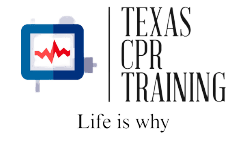Introduction
An AED, or automated external defibrillator, is a portable device that can save the life of someone who is experiencing sudden cardiac arrest (SCA). SCA is a medical condition in which the heart stops beating suddenly and unexpectedly, usually due to a problem with the heart’s electrical activity. SCA can cause death within minutes if not treated promptly. The combination of CPR and early defibrillation with an AED is effective in restoring the heart’s normal rhythm and increasing the chances of survival.
An AED is designed to be easy to use by anyone, even without formal training. It has a computerized system that analyzes the heart’s rhythm and determines if a shock is needed. It also provides voice and visual instructions to guide the user through the steps of using the device. There are two main types of AEDs: public access and professional use. Public access AEDs are available in many public places, such as airports, schools, and community centers. They are intended for use by laypeople who witness a cardiac arrest. Professional use AEDs are used by trained first responders, such as paramedics and emergency medical technicians (EMTs).
This blog will explain the basic steps of using an AED, the benefits of having an AED in the workplace, and some tips for maintaining an AED.
Basic Steps of Using an AED
The basic steps of using an AED are:
- Check if the person is responsive and breathing normally. If not, call 911 or ask someone else to do so.
- Turn on the AED and follow its instructions. It will tell you to expose the person’s chest and attach the pad electrodes to it. Make sure the pads are connected to the device.
- The AED will analyze the person’s heart rhythm and tell you if a shock is advised or not. If a shock is advised, it will tell you to press a button to deliver it. If the device is fully automated, it will deliver the shock without user intervention.
- The AED will tell you to perform CPR until it reanalyzes the heart rhythm or emergency help arrives. Follow its instructions on how to do chest compressions and rescue breaths.
- Do not touch or move the person while the AED is analyzing or delivering a shock. Make sure no one else is touching or near the person either.
- Do not use an AED near water, metal surfaces, or flammable materials. Do not use an AED on a person who has a pacemaker, implantable defibrillator, or medication patch on their chest.
Using an AED can make a difference between life and death for someone who suffers from SCA. Anyone can learn how to use an AED and be prepared to act in an emergency. By following the simple steps of using an AED, you can help save a life.
Benefits of Having an AED in the Workplace
Having an AED in the workplace can offer many benefits for both employers and employees. Some of these benefits are:
- Saving lives: With over 95% of patients succumbing to death before they reach the hospitals, installing these devices will assist with improving the survival odds during an SCA occurrence4. An onsite AED can save precious treatment time and deliver a shock within minutes of cardiac arrest.
- Improving morale: Having an AED in the workplace can show that employers care about their employees’ health and safety. It can also boost employees’ confidence and willingness to help in case of an emergency.
- Reducing liability: Having an AED in the workplace can reduce the risk of legal action from victims or their families who may claim negligence or lack of care. Many states have laws that protect users of AEDs from civil liability as long as they act in good faith and follow proper procedures.
- Enhancing reputation: Having an AED in the workplace can demonstrate social responsibility and commitment to public health. It can also attract customers, clients, and partners who value safety and wellness6.
Having an AED in the workplace can provide many advantages for both employers and employees. It can help save lives, improve morale, reduce liability, and enhance reputation.
